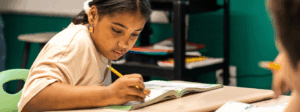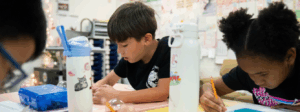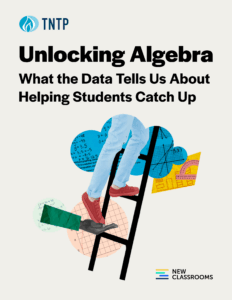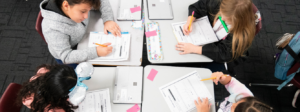Schools have been under enormous pressure this summer to reopen as soon as possible—from families, from data showing the learning students lost this spring, even from the White House. And system leaders have been working tirelessly to solve the dizzying array of logistical challenges to open school buildings safely.
Unfortunately, it’s now clear that our national failure to get COVID-19 under control means most students will still be attending school virtually for the foreseeable future. Most of the nation’s largest school systems have decided to keep buildings closed entirely to start the year, while others are planning a combination of in-person and at-home instruction. Even more are sure to shift back to distance learning as cases pop up in schools that reopen.
Faced with this new reality, school systems are scrambling to update their distance learning plans from backups or last resorts to the core part of students’ school experience this year. They have a lot of work to do in very little time, since we know many students—especially students of color and those from low-income families—had poor experiences during the first wave of distance learning this spring.
But it’s not too late to improve the quality of at-home instruction for the year ahead and give as many students as possible the opportunities they need to stay on track academically. School systems should focus on two big priorities: making the most of the instructional time they have with students—regardless of what form it takes—and authentic communication with school communities, so that current and future plans reflect a clear understanding of students’ and families’ experiences and needs.
What does this mean in practice? On the instructional front, systems should:
- Prioritize access to grade-appropriate assignments for all students, regardless of their background or previous achievement. Students need to spend the vast majority of their time in class (whether in-person or remote) on grade-appropriate assignments that are focused on this year’s priority content. That means providing teachers with assignments focused on that priority content as a core part of any curricular resources.
- Give only those assessments that help teachers make instructional decisions. It’s more important than ever that teachers have timely information on students’ progress and what learning they might have missed this spring. But that doesn’t mean systems need to prioritize the usual annual reading and math tests. Instead, they should use curriculum-embedded assessments (which can work even as part of distance learning) that can help teachers give students the grade-level content they need, while helping to fill in key concepts from last year.
- Provide professional learning and coaching that helps teachers use your curricular tools effectively in whatever setting school happens. Focus on creating a welcoming environment where staff feel connected to each other and are comfortable trying new instructional approaches. Then ensure that school leaders and other coaches are prepared to support teachers in strategies that will help them to meet students’ most pressing needs: how to build trusting relationships with students and families, what they’ll be teaching this year, and how they can prioritize grade-level content in the format they’ll be teaching this year.
And to build stronger connections with students and families, systems should:
- Ensure that every student has a relationship with at least one trusted adult on staff. All school-based instructional staff should be responsible for checking in regularly with a small number of students. And school leaders should help teachers create safe, welcoming classroom environments that will support students during this challenging time.
- Create an authentic feedback loop with all students, families, and student support networks. Systems should regularly survey students, families, and other members of students’ support networks about their experiences with in-person and distance learning. And systems should use this feedback to adjust their plans throughout the school year and improve students’ experiences.
COVID-19 is unlike anything school systems have faced. Teachers, school leaders, and system leaders deserve grace and empathy as they make one hard choice after another. We owe it to them—and to students—to focus on the things that matter most in the months ahead. Every extra opportunity students get to do grade-level work this fall, however imperfect, gives them a better chance to end up on track for success when the pandemic finally passes. The work to ensure students get more of those opportunities, especially from distance learning, needs to start now.
***
Want more tips for creating strong experiences for students during unprecedented times? Check out the free resources on our COVID-19 School Response Toolkit.







